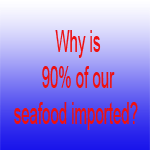

 |
 |
There has been a recent media
onslaught centered on a microscopic, unicellular organism - technically
a dinoflagellate - named Pfiesteria piscicida. This organism, proven to
have caused a number of fish kills in the Chesapeake region and a complex
of physical disorders in researchers and technicians working on it, is
responsible for a multi-state task force, for a significant decrease in
seafood sales affecting much of the Mid-Atlantic, for a number of Pfiesteria
hotlines, for a tremendous amount of public concern, for several
television “specials” and for seemingly countless words giving particular,
and possibly self-serving, spins to what is at this point a relatively
meager amount of hard data.
Pfiesteria-related illnesses
have been documented among researchers (particularly Dr. Joann Burkholder,
the North Carolina State University researcher who has done much of the
pioneering work on the organism, and her colleagues) coming in close, day-to-day
contact with the organism. Whether any illnesses can be attributed to people
coming in contact with the organism outside the laboratory has yet to be
determined [From the University of North Carolina website ![]() ].
].
While there has been a detectable decline in consumer confidence in locally produced seafood in the Mid-Atlantic, there has not been any indication that consuming fish or shellfish from “infected” waters is deleterious to human health. Quoting from a September 19 press release from the National Fisheries Institute, a trade association representing over 1000 companies involved in all aspects of the seafood industry, “Pfiesteria is not an infectious or contagious disease - it cannot be caught like a cold. There is no evidence that it can be passed along in the food chain, or passed from fish to human....No cases of seafood poisoning have been reported from eating fish exposed to Pfiesteria. Nor has there been evidence of tainted shellfish, oysters or crabs on the market.” (NFI contacts are Emily Holt or Pam Glass at 703-524-8881)
There has been a great deal of
speculation that nutrient enrichment of the waterways, possibly from agricultural
run-off, is causing the Pfiesteria blooms. This has not been proven either.
(from the American Farm Bureau website at www.fb.com/issues/analysis/pfiesteria.html![]() ]
]
As mentioned above, the governors
of Pennsylvania, Delaware, Maryland, Virginia, West Virginia and North
Carolina have formed a Task Force to provide a coordinated Pfiesteria research
program (Six states join Pfiesteria summit, UPI Science News - Yahoo News
- ![]() -
9/19/97). Several federal agencies, including the Geolgical Survey, the
National Marine Fisheries Service, the U.S. Department of Agriculture and
the Environmental Protection Agency have also been involved. A number of
universities and research institutions have initiated agressive Pfiesteria
research programs and several millions of dollars have been made available
to support this vital research effort.
-
9/19/97). Several federal agencies, including the Geolgical Survey, the
National Marine Fisheries Service, the U.S. Department of Agriculture and
the Environmental Protection Agency have also been involved. A number of
universities and research institutions have initiated agressive Pfiesteria
research programs and several millions of dollars have been made available
to support this vital research effort.
Finally, there has been a well-coordinated
and effective outreach program coming from a number of institutions and
agencies providing authoritative and timely information on Pfiesteria (web
sites and telephone contacts are referenced on the next page). Collectively
they are invaluable in gaining an understanding of an extremely complex,
but by no means catastrophic, situation.